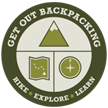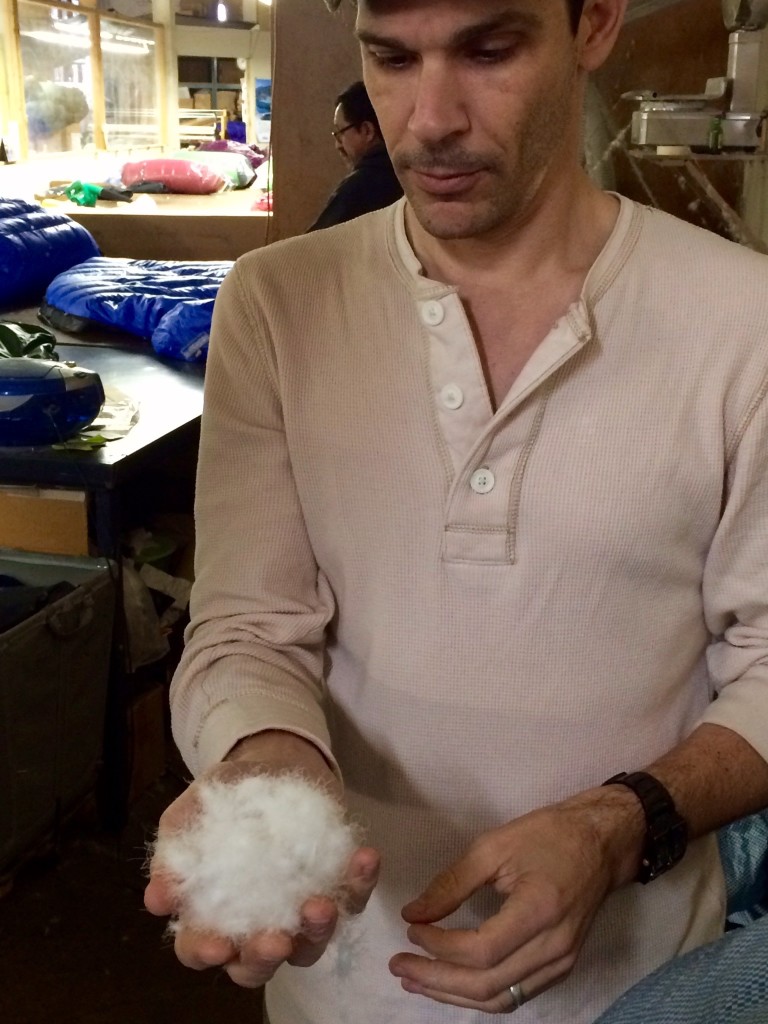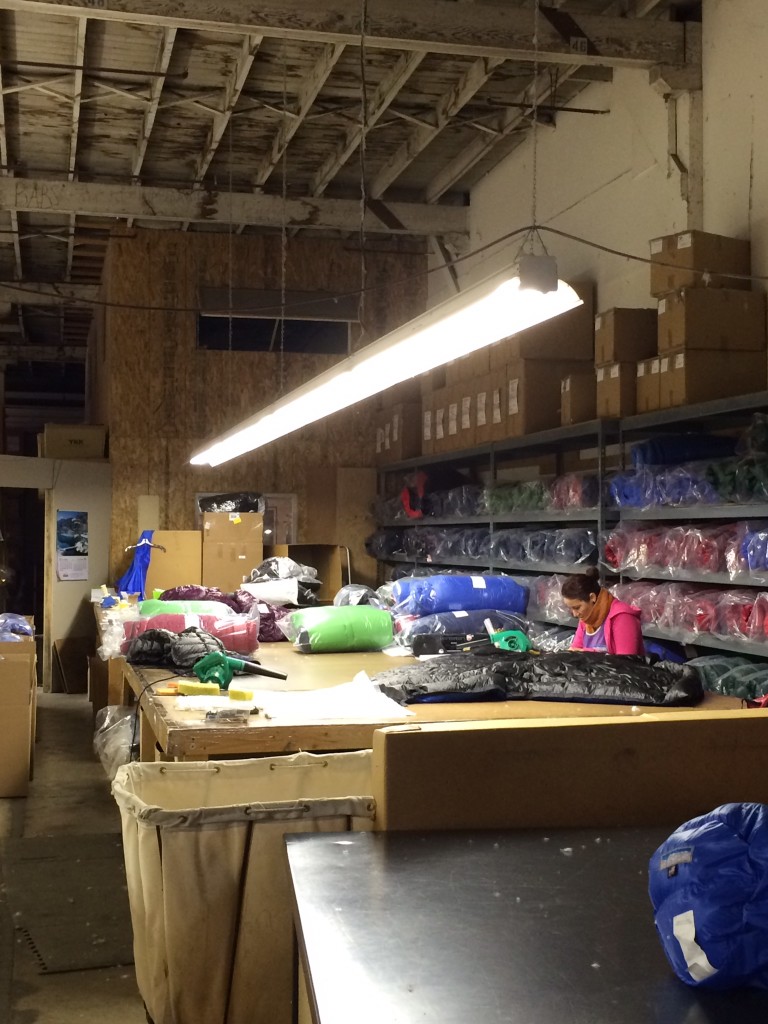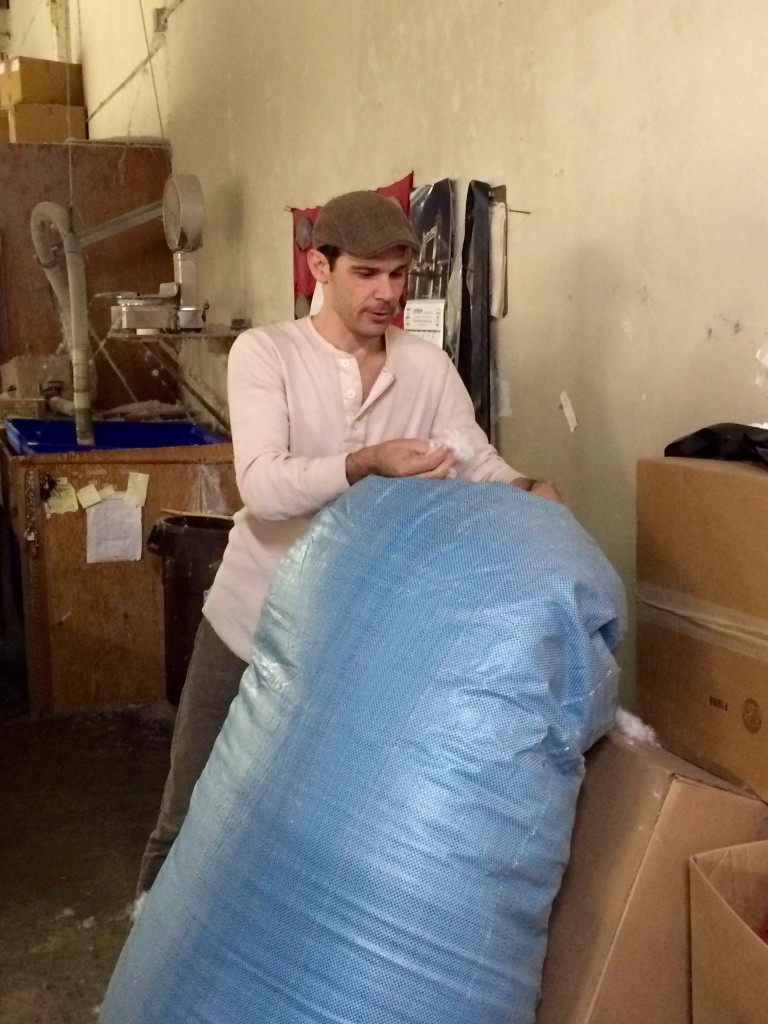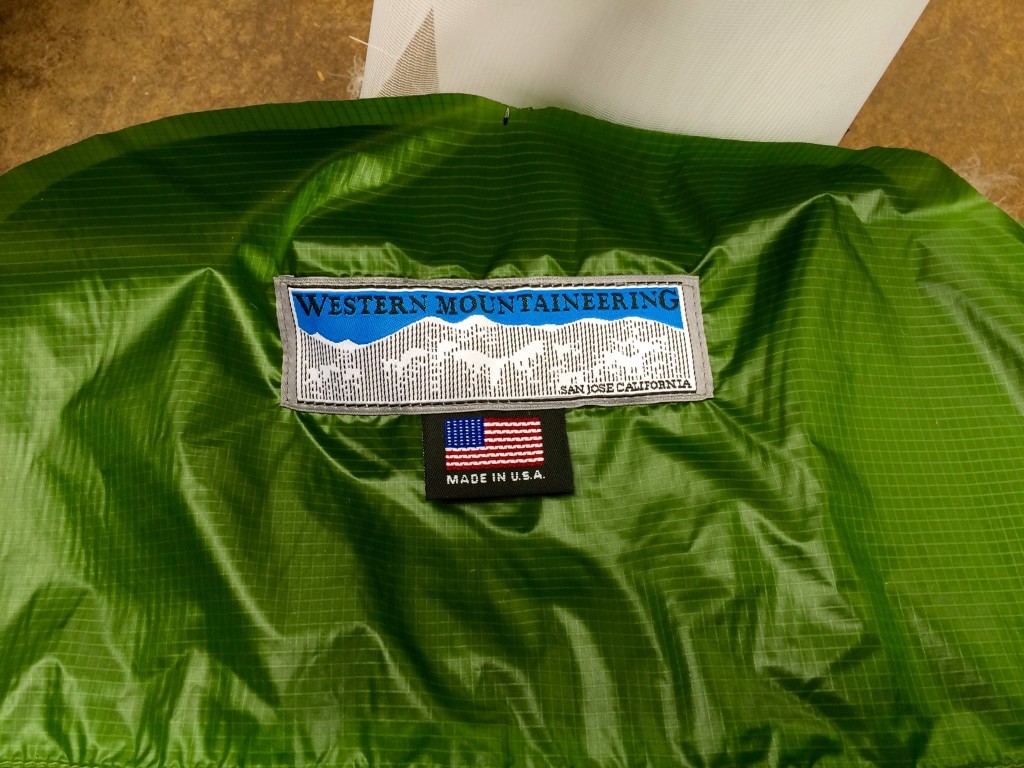Western Mountaineering Factory Tour
Over the Christmas break this year, I had the pleasure of visiting Western Mountaineering’s Factory in San Jose California. They have been manufacturing fine down equipment for more than 30 years and have a fantastic reputation for quality and craftsmanship. There I was met by a very knowledgeable gent named Gary Peterson, who oversees the production of these fine sleeping bags. After using their bags for 13 years now (I have three of them!) I was eager to see how it all goes down, here is what I found out.
1. How many steps or time wise does it take to make a sleeping bag from start to finish? There are roughly between 21 and 40 steps that we take to produce a sleeping bag, depending on how far you break down each function. For example, we overlock stitch all of the pleats in the hood for the bottom of the inside shell and the bottom of the outside shell at the same time yet I wasn’t sure whether to call that one step or two because we do all of the inside shell hoods together and then all of the outside shell hoods next. We also then overlock the side seams on both the inside shells and outside shells of the bags which could be another two steps or counted as one. If you wanted, you could just count all of the overlock stitching for both side seams and the hood darts as one step instead of four individual steps. This is why I gave a range of 21 to 40 steps. Some bags with less features may have fewer steps, such as the bags with partially sewn through construction like our Highlite. For the average bag like our Ultralite which is made with continuous baffle construction and features a full down collar and an insulated draft tube the production time works out to about 4.5 hours per bag.
2. How many employees work here at Western Mountaineering? At present, there are 48 employees in our company and 44 of them are working for Western Mountaineering. The other four people are working on Seventh Heaven branded products for the bedding industry (you saw the white cotton comforters and pillows in the back, those were our Seventh Heaven branded products-which are not sold to mountaineering shops but to fine linens and bedding stores).
3. Does every employee have a specialized skill/department or are they they trained in all aspects of production? We have a couple of people who only focus on quality control, another person that is just lining our products (with chalk lines on the tables up front that we showed you), one or two people hot cutting parts full time, one or two people filling products full time and the rest of the staff are sewing machine operators. Our sewing machine operators are divided into two classes, bafflers and finishers. The bafflers are our sewing machine operators who take the outer and inner shells of groups of sleeping bags (after they have been cut and lined with chalk), sew them together, overlock the raw edges, then stitch the mesh baffle material to the outer shells and then join the inside shells to the other side of the netting for each baffle line. The finishers take all of the parts for a sleeping bag which have been cut by hand with a hot knife and grouped together (usually in batches of ten per bundle), they sew all of the parts together with double stitching, sew those parts onto the baffled shells which have been prepared by one of our “bafflers”, and then insert the zipper with double stitching along the inside edge of the open sleeping bag shell. Once the finisher has completed a group of bags the sleeping bag is a completed unfilled shell that just needs to be filled with down, closed, and quality checked before it can be shipped out to a retailer.
4. How, if at all have the fabrics you guys use changed over the years? Our fabrics have changed quite a bit over the years, and I have personally worked with suppliers and pushed them to develop most of the fabrics we now use. When I first started with the company we were simply using a stock “downproof” industry standard for lightweight fabric which was a 1.1oz ripstop 30 denier nylon that was about a 270 thread count material. Our current lightweight series is made with a 440 thread count 12 denier fabric which weighs less than an ounce per square yard and is made with a balanced construction with specific calendaring settings used in the finishing process. I have spent a lot of time researching super lightweight downproof fabrics and visited each of the mills and finishing plants in Japan and Korea where our fabrics are made. The quality of fabric is extremely important to us because we want our products to last a very long time. In fact the only “stock” fabric we buy is our two layer laminated shell fabric for Gore Windstopper series bags. All of the other materials including the lining fabric and our Microfiber has been made specifically for Western Mountaineering with the construction and finishing details that I have asked for. Normally textile vendors and producers won’t offer any fabrics with a balanced construction because it is cheaper to weave material when more threads are spooled onto the warp loom because they can spools it out more quickly with fewer threads in the fill direction. In order to weave fabric with the same number of yarns in both directions they must slow the weaving machine down by 20 or 30 percent in order to pack the fill direction with enough yarns to reach a balance construction. We pay more for all of our fabrics because we always want a balanced construction for longevity, stability, and downproofess. With the Gore Windstopper the face fabric isn’t as necessary to make with a balanced construction since the downproofness is achieved by the presence of a second layer/ the membrane which is bonded during lamination to the face fabric.
5. What factors make Western Mountaineering reluctant to use water replant down? We are actively testing hydrophobic down/DWR treated down/Water Repellant down from a number of different suppliers and have been since 2013. Our down is extremely water resistant without any help or chemical processes but just in its pure and natural state. Since our down lasts such a long time and is such a beautiful raw material naturally, we do not feel that it is responsible to abandon it for a product that appears to us as a lower quality raw material. We are surprised that so many brands started using it right away, since we feel it will take a couple of more years of testing before we can make a determination on how long it might last under normal circumstances and how it will perform over time through a wide variety of humidity levels, user applications, circumstances, etc. We have five garments which were made by splitting the jacket in the middle and filling half with treated and the other half with untreated down that came from the same batch of raw materials. There are three sleeping bags which are filled with alternate chambers of treated and untreated down. All of these test pieces are being used over 150 days/nights per year and have been since the fall of 2013. We think a couple of more years should provide us with ample data to know whether we should strongly consider using a treated down in any of our products, but as of today there are no strong indications that have prompted us to consider making a switch. Bottom line is that our down is naturally so water resistant and of such a high quality that we feel it is better than any other product (treated or untreated) that we have seen. We feel our down source provides the best down in the world, period.
6. With ultralight quilts getting more popular these days, will Western Mountaineering move into the quilt market as time goes on? We have been making some prototypes of top quilts, bottomless overbags, and some other products along these lines because of the number of requests we receive for these items. I do think we will likely expand into other categories and add some niche products such as an ultralight quilt and probably an underquilt for the growing crowd of hammock users/enthusiasts. I just made our first hammock underquilt prototype (that weighs 16 ounces) and will test it out soon with a top quilt that weighs 17.5 ounces. I think the combination should keep me warm down to 25 degrees and for a combined weight that came in at less than any other full length system for hammocks that I have seen. That being said, I have still some work to do on the pattern and so far I have never spent the night in a hammock. Once I test it out I’ll probably find even a few more changes to improve performance. I think these things are more likely to appeal to a specific segment or niche group of outdoor enthusiasts (in other words I don’t think they will appeal to the masses), but I do see this crowd of ultralight fast packers and quilt sleepers growing at a pretty fast clip over the past couple of years.
7. What steps does the company make to ensure a accurate temperature rating? We have them tested by an EN certified facility and all of the formal testing has repeatedly shown that our ratings are, if anything, conservative in most cases. None of us want to overpromise warmth and then not deliver. There would be nothing for us to gain by overreaching our claims of warmth potential so we have always tried to be as honest and give conservative estimates for temperature ratings whenever we come out with a new product. Our own field testing and feedback from other gear testers we trust also provide us the insight we need to determine what temperature to claim for any given bag. Many factors in the bags construction will already point us towards a ballpark rating anyways. For example, we know that by making a bag with taller netting which allows for more insulation we are already designing it towards a colder/lower temperature rating. If you design a bag with 8” of loft and features like a hood and draft tube then you already have an idea that the bag will be probably be warm enough to use within ten degrees in either direction of zero F. With so many years of experience it would be hard for us to ever come out with a bag with a claimed rating that turned out to be way off the mark, it just wouldn’t happen.
